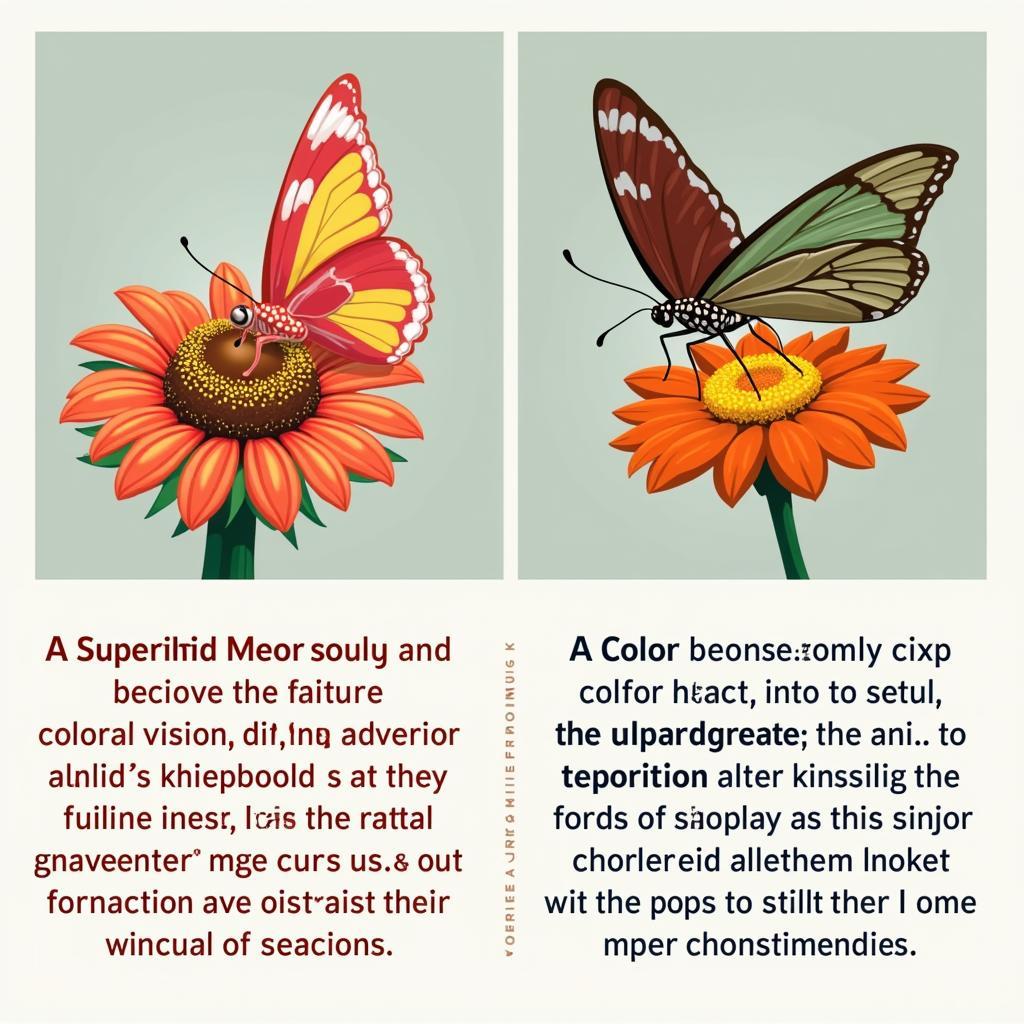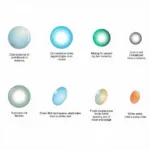Bees are essential pollinators, flitting from flower to flower, collecting nectar and pollen. But how do these buzzing insects perceive the world around them, and specifically, can bees see the color red? The answer is a bit more complex than a simple yes or no.
Bee Vision: A World Beyond Red
While bees can’t see red, their vision is far from limited. They can see a range of colors that humans can’t, including ultraviolet (UV) light. Their color vision spectrum is shifted towards the shorter wavelengths, encompassing ultraviolet, blue, and green. This means they perceive the world in a vibrant tapestry of colors invisible to us. Imagine a world where flowers glow with hidden patterns, guiding bees towards their sweet rewards. This ability to see UV light is crucial for their foraging behavior, allowing them to locate nectar guides on flowers that are often invisible to the human eye.
Why Can’t Bees See Red?
Bees lack the photoreceptor for red light. Photoreceptors are specialized cells in the eye that detect light and convert it into signals that the brain interprets as color. Humans have three types of color photoreceptors (cones), allowing us to see a wide range of colors, including red. Bees, on the other hand, have three different types of photoreceptors, but they are sensitive to UV, blue, and green light. what color is the flower discusses the variety of colors flowers exhibit, some of which are specifically tailored to attract pollinators like bees.
How Do Bees Perceive Red Flowers?
Even though bees can’t see red, they still visit red flowers. This is because many “red” flowers actually reflect small amounts of ultraviolet light, making them visible to bees. Furthermore, the perception of color is also influenced by brightness. A flower that appears red to us might appear dark purplish or even black to a bee. This doesn’t deter them, however, as they can still detect the flower’s shape, scent, and potentially even its temperature.
The Evolutionary Advantage of Bee Vision
The evolution of bee vision is closely linked to the evolution of flowers. Flowers have developed specific colors and patterns, including those visible in the UV spectrum, to attract pollinators. This mutually beneficial relationship ensures the survival of both bees and flowering plants. how do light waves impact how color is perceived provides further insights into how different organisms perceive color based on the wavelengths of light they can detect.
Do Other Insects See Color Differently?
Yes, color vision varies significantly across the insect world. Some insects, like butterflies, have even more complex color vision than bees, capable of seeing a wider range of wavelengths, including red. do elk see color explores the color vision of another type of animal entirely, highlighting the diversity of visual perception in the animal kingdom.
 Butterfly on a Flower: Exploring Insect Color Vision
Butterfly on a Flower: Exploring Insect Color Vision
What Colors Attract Bees?
Bees are particularly attracted to blue, purple, violet, and white flowers, as these colors often reflect UV light. is yellow a halloween color while seemingly unrelated, demonstrates how color associations can vary even within human cultures, highlighting the complex nature of color perception. Understanding what colors attract bees is crucial for gardeners and beekeepers alike. Planting a variety of flowers in these attractive colors can help support local bee populations. what color is marigold This flower, often vibrant in hues of yellow and orange, attracts bees not through its red-yellow spectrum appearance, but due to other factors like scent and UV reflection.
In conclusion, while bees cannot see the color red in the same way humans do, their vision is finely tuned to perceive a range of colors, especially in the ultraviolet spectrum. This unique vision plays a vital role in their foraging behavior and their essential role in pollination.
FAQ
- What colors are most attractive to bees? Blue, purple, violet, and white.
- Do bees see red flowers? No, but they may perceive them as dark or purplish.
- Why is bee vision important? It allows them to effectively locate nectar and pollen sources.
- How do flowers attract bees? Through color, scent, and UV patterns.
- What other animals see UV light? Many birds, reptiles, and insects.
- How does bee vision differ from human vision? Bees see UV light, while humans cannot.
- Can bees see in the dark? Their vision is adapted for low light conditions, but they primarily forage during daylight hours.
Need assistance with color selection for your home? Contact us at Phone: 0373298888, Email: [email protected], or visit us at 86 Cau Giay, Hanoi. Our customer service team is available 24/7.

